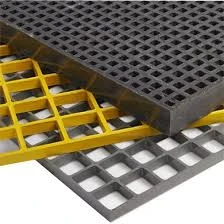loading...
- No. 9, Xingyuan South Street, Dongwaihuan Road, Zaoqiang County, Hengshui, Hebei, China
- admin@zjcomposites.com
- +86 15097380338
- Welcome to visit our website!
grp water storage tank
Understanding GRP Water Storage Tanks
Glass Reinforced Plastic (GRP) water storage tanks have gained popularity in recent years due to their unique combination of durability, flexibility, and cost-effectiveness. These tanks are made from a composite material, combining fiberglass with a resin, which provides a robust solution for water storage needs in various settings.
Advantages of GRP Water Storage Tanks
One of the significant advantages of GRP water storage tanks is their resistance to corrosion. Unlike traditional steel tanks, which can rust over time when exposed to water, GRP tanks are not susceptible to rust or degradation from environmental factors. This property ensures that water stored in these tanks remains clean and uncontaminated, making them an ideal choice for potable water storage.
Moreover, GRP tanks are lightweight yet incredibly strong. Their lightweight nature facilitates easier transportation and installation, which can significantly reduce labor and logistical costs. The strength of GRP also allows these tanks to withstand significant pressure, making them suitable for both domestic and industrial applications.
Another noteworthy benefit is the versatility in design. GRP water storage tanks can be manufactured in various shapes and sizes to meet specific requirements. Whether a large-scale installation for industrial use or a smaller system for residential purposes, GRP tanks can be customized to fit the project’s needs. They can be fitted with additional features such as insulation, which helps maintain water temperatures, critical in some applications.
Environmental Considerations
grp water storage tank

As environmental concerns continue to grow, GRP tanks present a sustainable choice for water storage. Their long lifespan—often exceeding 30 years—means fewer replacements and less waste generated over time. Additionally, the production of GRP materials typically generates less environmental impact compared to conventional materials like concrete or steel.
Installation and Maintenance
Installing a GRP water storage tank is a straightforward process, thanks to their modular design. Many GRP tanks can be assembled on-site, further simplifying installation. Maintenance involves regular inspections to ensure structural integrity and cleanliness. The smooth surface of GRP tanks inhibits the growth of algae and other bacteria, making them easier to clean and maintain than other tank materials.
Applications
GRP tanks are widely used across various sectors, including residential, commercial, agricultural, and industrial applications. They serve as a reliable solution for potable water storage in homes and large-scale water supply installations. In agricultural settings, they are often used to store irrigation water. In industrial applications, GRP tanks are ideal for chemical storage due to their corrosion resistance.
Conclusion
In conclusion, GRP water storage tanks offer a multitude of benefits that make them an exceptional choice for various water storage needs. With their resistance to corrosion, lightweight design, customizability, environmental sustainability, and low maintenance requirements, they are increasingly preferred in a range of applications. As water storage demands continue to rise, the importance of innovative solutions like GRP tanks cannot be overstated. They not only provide practical advantages but also contribute positively to sustainability efforts in water management.
-
The Rise of FRP Profiles: Strong, Lightweight, and Built to LastNewsJul.14,2025
-
SMC Panel Tanks: A Modern Water Storage Solution for All EnvironmentsNewsJul.14,2025
-
GRP Grating: A Modern Solution for Safe and Durable Access SystemsNewsJul.14,2025
-
Galvanized Steel Water Tanks: Durable, Reliable, and Ready for UseNewsJul.14,2025
-
FRP Mini Mesh Grating: The Safer, Smarter Flooring SolutionNewsJul.14,2025
-
Exploring FRP Vessels: Durable Solutions for Modern Fluid HandlingNewsJul.14,2025
-
GRP Structures: The Future of Lightweight, High-Performance EngineeringNewsJun.20,2025
